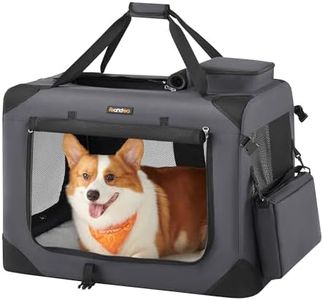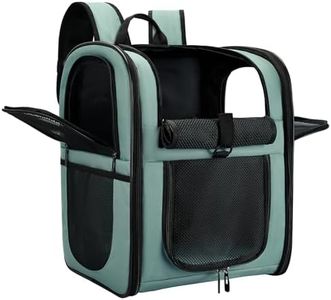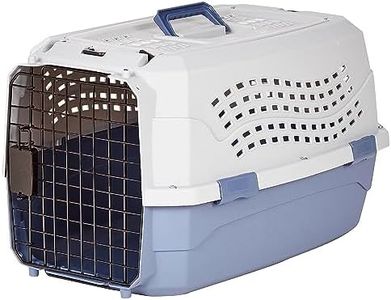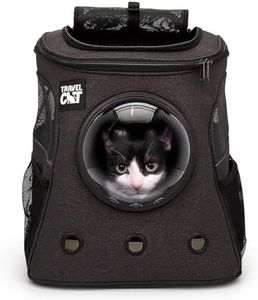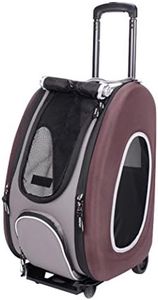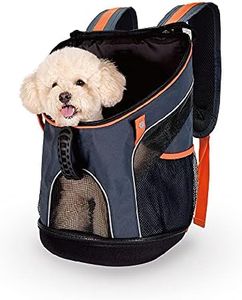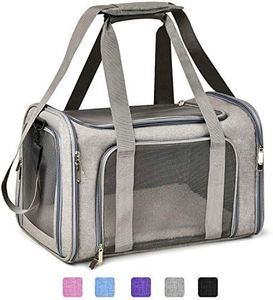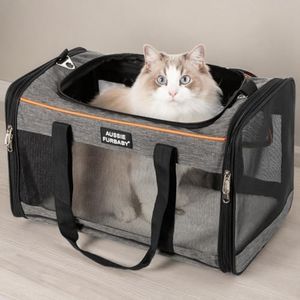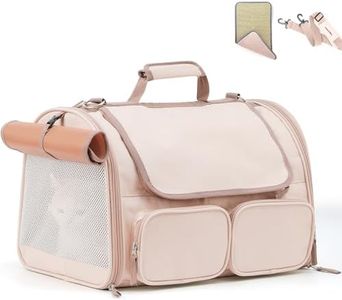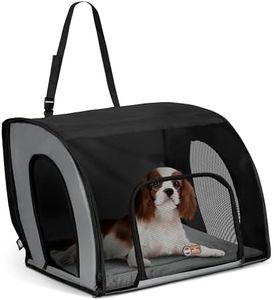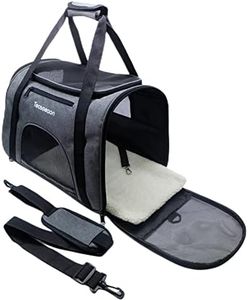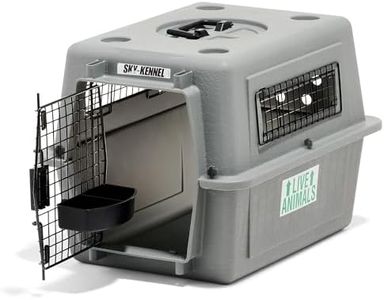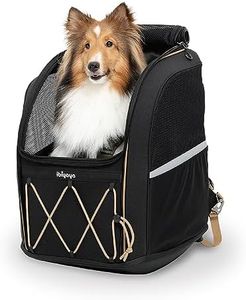We Use CookiesWe use cookies to enhance the security, performance,
functionality and for analytical and promotional activities. By continuing to browse this site you
are agreeing to our privacy policy
10 Best Cat Carriers
From leading brands and best sellers available on the web.Buying Guide for the Best Cat Carriers
Choosing the right cat carrier is important for both your pet’s safety and your own peace of mind during travel. A well-suited carrier makes trips to the vet, vacations, or moves much less stressful for your cat, while making it easier for you to transport them comfortably. Focus on finding a carrier that fits your cat's size and temperament, is easy for you to handle, and is safe and secure for all kinds of travel.SizeSize refers to the dimensions of the carrier and how much space your cat will have inside. Too small, and your cat will be cramped and anxious; too large, and your cat might slide around, which can be unsettling. Carriers typically come in small, medium, and large sizes; to choose the right one, make sure your cat can stand up, turn around, and lie down comfortably. Consider your cat’s weight and length, and remember that kittens will grow! If your cat is nervous, a cozy fit may help them feel more secure.
MaterialMaterial determines the carrier’s durability, comfort, and weight. The most common materials are hard plastic, soft-sided fabric, and sometimes a combination. Hard carriers are sturdy, easy to clean, and offer lots of protection, making them excellent for car travel or anxious cats. Soft carriers are lighter and often more comfortable for short trips, but may not hold up as well if your cat likes to scratch or chew. If you fly with your cat, soft-sided carriers often fit better under airplane seats. Choose the material that matches your cat’s temperament, your travel style, and how much protection or flexibility you need.
VentilationVentilation means the amount of airflow in the carrier, usually provided by mesh panels or holes. Good ventilation keeps your cat cool and relaxed, and lets them see outside, which helps some cats stay calm. Carriers with at least two sides of mesh or holes are ideal. If your cat is skittish, you might want one with more privacy, but always make sure there’s enough airflow for safety. Consider how much time your cat will spend in the carrier and choose a model with the right balance of openness and security.
Access PointsAccess points are the doors or openings, which can be on the top, front, or even sides of the carrier. Front-loading carriers are common and work well for calm cats, while top-loading carriers make it easier to gently lower in a nervous or resistant cat. Some carriers have both, which can be helpful in various situations. If your cat resists getting inside, or if you have mobility challenges, a top-access feature can make this process much easier for you.
Security FeaturesSecurity features include the quality of zippers, locks, and clasps that keep the carrier closed and your cat safe. Sturdy latches or double zippers add peace of mind, especially for escape-prone pets. If your cat is clever or strong, or if you plan to travel in busy places, look for extra reinforcement or additional locks. Choose a carrier that you can close quickly and confidently, so you know your cat is secure wherever you go.
Ease of CleaningEase of cleaning refers to how simple it is to remove dirt, fur, or accidents from the carrier. Removable and washable pads or liners can help keep your cat comfortable and your carrier smelling fresh. Hard-sided carriers tend to be easier to rinse and wipe down, while soft carriers might have machine-washable fabrics. If your cat gets carsick or nervous, or if you want something low-maintenance, choose a carrier that you can clean thoroughly after each use.
PortabilityPortability covers how easy the carrier is to move and carry, including handles and straps. Some carriers come with padded shoulder straps, backpack options, or wheels for easier transport. Consider how far you’ll be carrying your cat and how heavy they are. If you travel by foot or public transport, or if lifting is difficult for you, choose a style that makes carrying your cat as effortless as possible.
